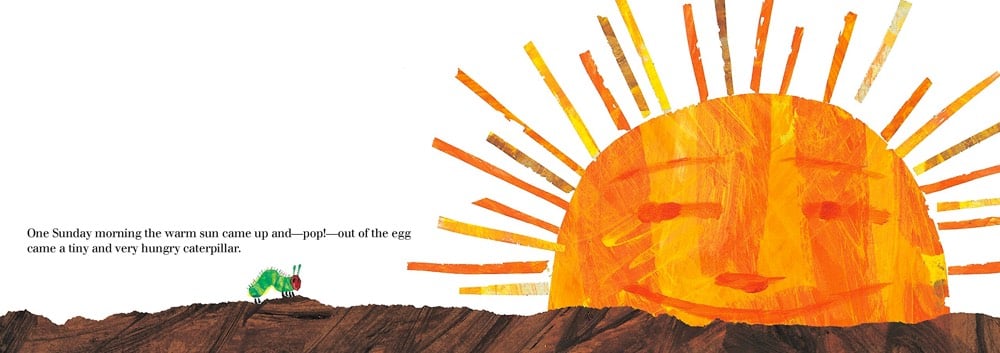‘The Very Hungry Caterpillar’ Turns 50 Years Old
50 years ago last week, Eric Carle’s The Very Hungry Caterpillar was published for the first time. In a piece for The Atlantic, Ashley Fetters talked to a pair of kid lit experts about why the book remains so popular today.
Part of why both kids and parents love The Very Hungry Caterpillar is because it’s an educational book that doesn’t feel like a capital-E Educational book. Traditionally, children’s literature is a didactic genre: “It teaches something,” Martin says, “but the best children’s books teach without kids knowing that they’re learning something.” In The Very Hungry Caterpillar, she adds, “you learn the days of the week. You learn colors. You learn the fruits. You learn junk-food names. In the end, you learn a little bit about nutrition, too: If you eat a whole bunch of junk food, you’re not going to feel that great.” Yet, crucially, none of the valuable information being presented ever feels “in your face,” Martin says.
The Very Hungry Caterpillar was certainly one of my favorite books as a kid — along with Cloudy With a Chance of Meatballs, Richard Scarry’s Busy, Busy Town & Cars and Trucks and Things That Go, and the Frog & Toad books — and it was one of the first books we read to our kids. I remember very clearly loving the partial pages and the holes. Holes! In a book! Right in the middle of the page! It felt transgressive. Like, what else is possible in this world if you can do such a thing? (Also, “caterpillar” is such a satisfying word to say, both correctly and, er, less so… I still default to my childhood “callarpitter” sometimes).






Stay Connected